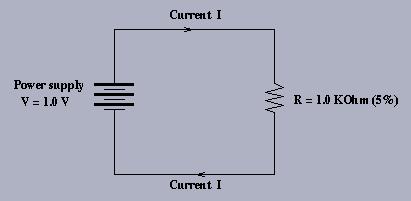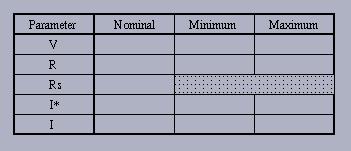METHOD:

1. Build the above circuit on your breadboard.
2. Adjust the voltage V = 1.0 V (approximately) using the DMM.
3. Refer to the manual for the DMM and calculate the accuracy of the voltage measurement that you just made.
4. Get R = 1 KOhm (5% tolerance) and measure it using the DMM.
5. Refer to the manual for the DMM and calculate the accuracy of the resistance measurement you just made. A copy of the appropriate manual page is included with this lab, and the manual itself is available in the lab literature rack.
6. What is the DMM shunt resistance Rs for the current range used? What is its function and how does it affect the measurement of the current?
7. With the measured voltage and resistance, what is the current I* that you expect to get (nominal, minimum and maximum), considering the factors that affect accuracy.
8. Measure the current I using the DMM.
9. Refer to the manual for the DMM and calculate the accuracy of the current reading you just made above.
10. Fill in the table below.

DISCUSSION AND CONCLUSIONS:
The objective of any experiment is to verify a set of expected results within
a specified range of certainty.
Specify the uncertainty (by calculating maximum and minimum bounds on the
measurements) associated with each of your measurements.
Once you have this information you can calculate how these errors propagate
through the equation for Ohm's Law to provide you with a range
of uncertainty in the expected current I*.
See how close your measurement of I coincides with the expected value
(and explain). Can you think of any other possible sources of error?
Last modified: Fri Sep 22 16:37:50 PDT 2017.